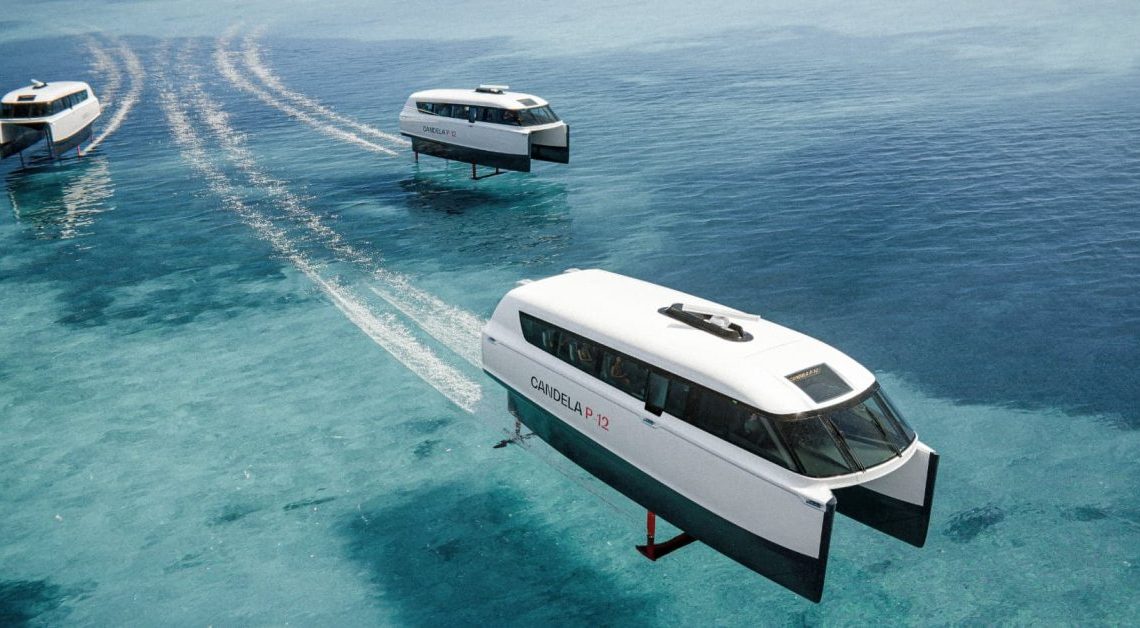
Saudi Arabia has its sights set on shuttling people around its desert megacity on flying electric boats. While it may sound like science fiction, the wings are already in motion. To achieve its goal, Saudi Arabia even already purchased eight of the Swedish electric boatmaker Candela’s new P-12 electric ferries.
Candela’s electric ferries are famous not just for their high efficiency, but rather how they achieve such high efficiency. Candela uses computer-controlled hydrofoils to automatically lift its boats out of the water, making its batteries last much longer while the boats travel faster and farther.
The company got its start with speedboats for recreational boaters, but has since expanded into commercial vessels by applying its technology and designs to multiple sizes of flying ferries.

“The P-12 is designed to create zero-emission water transport systems which have significant improvements over traditional water commuting” explained Gustav Hasselskog, CEO and founder of Candela. “Unlike legacy systems with large, slow, and energy-inefficient conventional ferries, the Candela P-12 water taxi is a smaller and faster unit, allowing much more frequent departures and quicker journeys for passengers. All daily necessities and services will be just a short boat commute away.”
The Candela P-12 is the model that Saudi Arabia plans to use in its NEOM desert megacity, currently being built along the Red Sea. The city has already purchased eight P-12s, the largest commercial order in Candela’s history.
The vessels are expected to be delivered starting next year.

The P-12 was first launched last year and will begin operations as part of Stockholm’s public transit system later this year.
The boat not only reduces the energy required for commercial ferry systems but also offers a much smoother and more comfortable voyage, even over choppy water. Because the boat doesn’t rock or crash over waves and boat wakes, even passengers prone to sea sickness find the ride comfortable.
“We’re extremely proud to provide a vessel system designed with both passengers and the environment in mind. Short waiting times, quick connections, and a very enjoyable experience without taxing the environment with wakes, emissions, and noise will revolutionize how we travel on water,” added Hasselskog.
Author: Micah Toll
Source: Electrek



